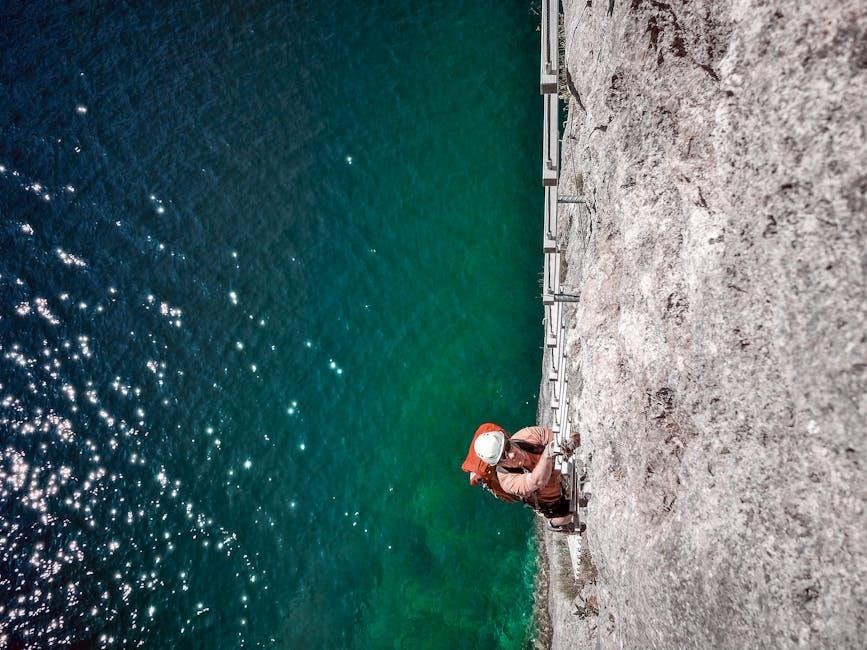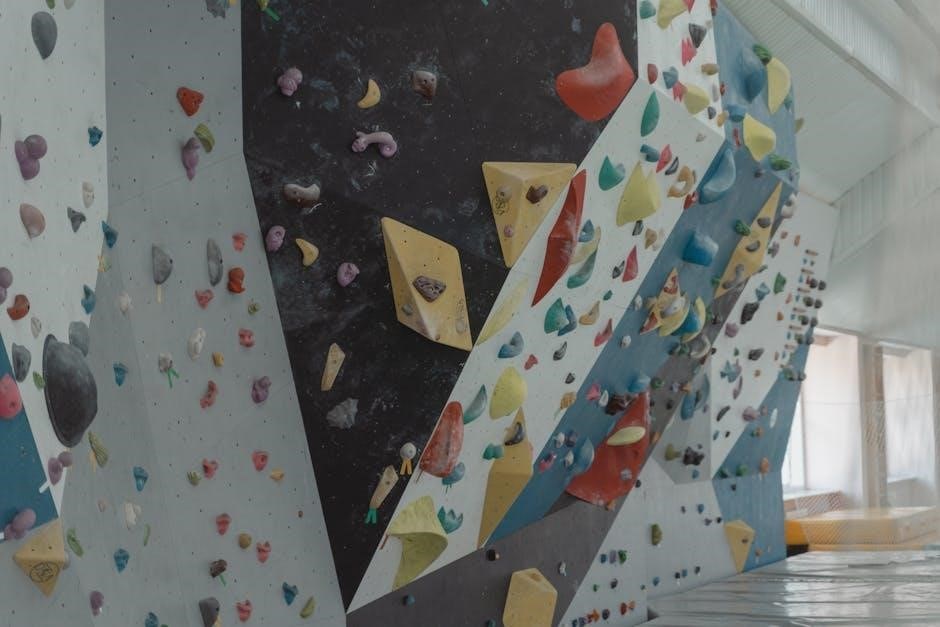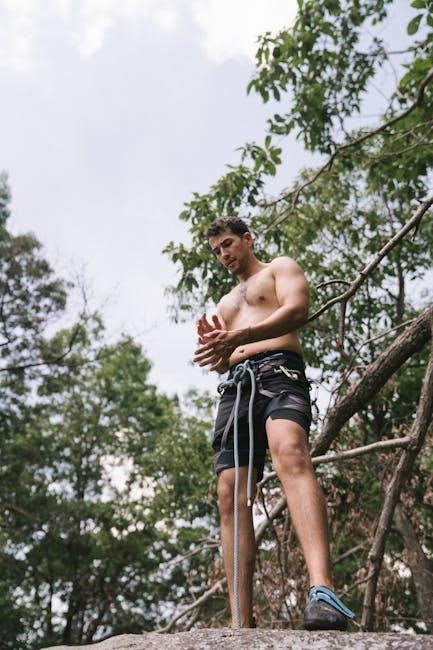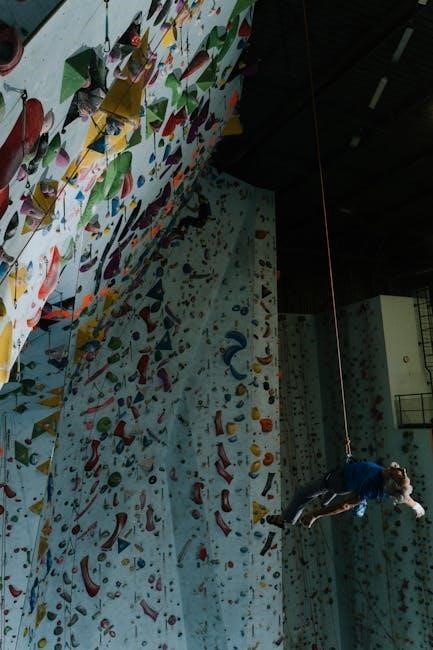Climbing harness size guide provides essential information for climbers to choose the right harness size and type, ensuring a comfortable and safe climbing experience with proper fit and support always matters.
Importance of Proper Fit
A proper fit is crucial for a climbing harness as it directly affects the comfort and safety of the climber. A well-fitting harness provides the necessary support and protection, allowing the climber to focus on the climb without distractions. On the other hand, a poorly fitting harness can lead to discomfort, restricted movement, and even safety hazards. The importance of proper fit cannot be overstated, as it can make a significant difference in the overall climbing experience. A harness that fits correctly will distribute the weight and forces evenly, reducing the risk of injury or accidents. Furthermore, a proper fit also ensures that the harness functions as intended, providing the necessary security and protection for the climber. By prioritizing proper fit, climbers can minimize risks and maximize their climbing performance and enjoyment, making it an essential consideration for any climbing harness. Proper fit is essential for climbing harnesses.

Overview of Climbing Harness Types
Climbing harnesses come in various types, each designed to cater to specific climbing needs and preferences. There are women’s specific harnesses, unisex harnesses, and harnesses designed for specific climbing disciplines, such as sport climbing, trad climbing, or ice climbing. Women’s specific harnesses have a unique design, with a smaller waist belt and longer rise, providing a more comfortable fit for women. Unisex harnesses, on the other hand, are designed to fit a wide range of body types and are often more versatile. Additionally, some harnesses are designed with specific features, such as adjustable leg loops or integrated gear loops, to enhance climbing performance and convenience. Understanding the different types of climbing harnesses is essential in selecting the right one, as each type has its own unique characteristics and benefits. Climbing harness types vary in design and features to suit different climbing styles and needs. Harnesses are designed for comfort and performance.

Understanding Climbing Harness Sizing
Climbing harness sizing is crucial for comfort and safety, requiring accurate measurements and consideration of body proportions and harness type always matters for proper fit and support systems.
Waist Circumference Measurements
To determine the correct climbing harness size, taking accurate waist circumference measurements is essential. This involves wrapping a flexible measuring tape around the narrowest part of the natural waistline, usually just above the hipbone. The tape should be level and parallel to the floor, and the measurement should be taken with a comfortable and relaxed stance. It is crucial to ensure the tape is not too tight or too loose, as this can affect the accuracy of the measurement. By taking the time to get an accurate waist circumference measurement, climbers can help ensure a proper fit and optimal comfort and support from their harness. A well-fitting harness is vital for safe and enjoyable climbing, and accurate measurements are the first step in achieving this. Climbers should always refer to the manufacturer’s sizing chart for specific guidance on taking measurements and choosing the correct size.
Leg Loop and Rise Proportions
Leg loop and rise proportions are critical factors in determining the comfort and fit of a climbing harness. The leg loops should be proportionate to the waist size, with a comfortable and secure fit around the thighs. The rise, which is the distance between the leg loops and the waist belt, should also be proportionate to the overall size of the harness. A well-designed harness will have a rise that is long enough to provide support and comfort, but not so long that it interferes with movement or causes discomfort. The proportions of the leg loops and rise can vary between different harness models and brands, so it’s essential to try on a harness and check the fit before making a purchase. By considering the leg loop and rise proportions, climbers can find a harness that provides optimal comfort, support, and mobility. This is especially important for climbers who plan to use their harness for extended periods or for more demanding climbing activities.

Climbing Harness Size Charts
Climbing harness size charts provide detailed measurements for various harness sizes and types, helping climbers select the perfect fit with accurate and reliable information always available online.
Black Diamond Harness Size Chart
The Black Diamond harness size chart is a valuable resource for climbers, providing detailed measurements for various harness sizes and types. This chart includes waist circumference measurements, ranging from 27-30 inches for small sizes to 33-36 inches for extra-large sizes. The chart also takes into account leg loop and rise proportions, ensuring a comfortable and secure fit. By consulting the Black Diamond harness size chart, climbers can select the perfect harness for their needs, whether they are beginners or experienced climbers. The chart is available online, making it easily accessible for climbers to reference before making a purchase. With its comprehensive and accurate information, the Black Diamond harness size chart is an essential tool for anyone looking to invest in a high-quality climbing harness. The chart is user-friendly and easy to navigate, allowing climbers to quickly find the information they need.
Size Charts by Other Brands
Other climbing harness brands, such as Petzl, Arc’teryx, and Mammut, also provide size charts to help climbers choose the right harness. These size charts typically include measurements for waist circumference, leg loops, and rise, as well as sizing guidelines for different harness models. Some brands may have slightly different sizing systems, so it’s essential to consult the specific size chart for the brand and model you’re interested in. By comparing size charts from different brands, climbers can find the best fit for their body type and climbing style. Many brands offer online size charts, making it easy to research and compare different options. Additionally, some brands may provide sizing guides specifically for women or children, taking into account their unique fit requirements. Using a size chart from a reputable brand can help ensure a comfortable and secure fit, which is critical for safe and enjoyable climbing. Climbers should always consult the size chart before making a purchase.

Factors to Consider When Choosing a Climbing Harness
Climbers consider factors like body shape, climbing style, and personal needs when selecting a harness for optimal comfort and performance always.
Body Shape and Proportions
Climbers come in various shapes and sizes, and their body proportions play a significant role in choosing the right harness. The size and shape of the waist, legs, and torso affect the fit and comfort of the harness. For instance, climbers with longer torsos may require a harness with a longer rise to ensure a comfortable fit. Similarly, those with larger legs may need a harness with larger leg loops. Understanding body proportions is crucial in selecting a harness that provides optimal support and comfort. Climbers should consider their body shape and proportions when trying on harnesses to ensure the best fit. Additionally, some harnesses are designed specifically for certain body types, such as women’s harnesses with smaller waist belts and longer rises. By considering body shape and proportions, climbers can find a harness that meets their unique needs and provides a comfortable and secure fit. This is essential for a safe and enjoyable climbing experience.
Personal Climbing Style and Needs
Climbers have different styles and needs, and their harness should reflect this. For example, sport climbers may prefer a lightweight harness with a focus on mobility, while trad climbers may require a more durable harness with extra gear loops. Ice climbers, on the other hand, may need a harness with a more secure fit to prevent shifting during ascent. Climbers should consider their personal style and needs when selecting a harness, taking into account factors such as the type of climbing they will be doing, the frequency of their climbs, and their level of experience. By choosing a harness that meets their specific needs, climbers can optimize their performance and stay safe on the climb. A well-chosen harness can make a significant difference in a climber’s overall experience, allowing them to focus on the climb rather than their equipment. This is crucial for a successful and enjoyable climb.